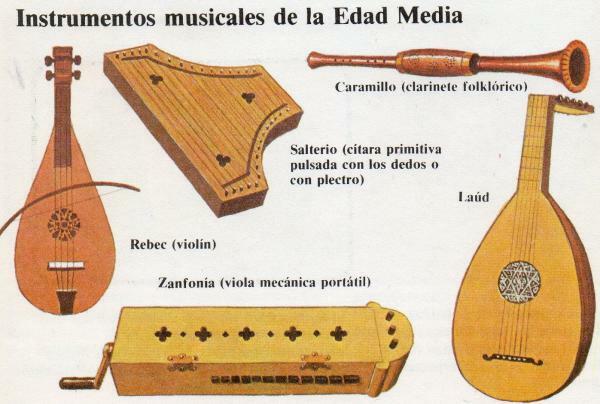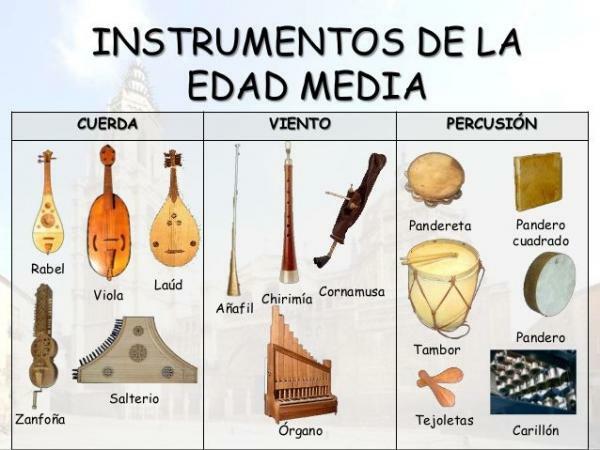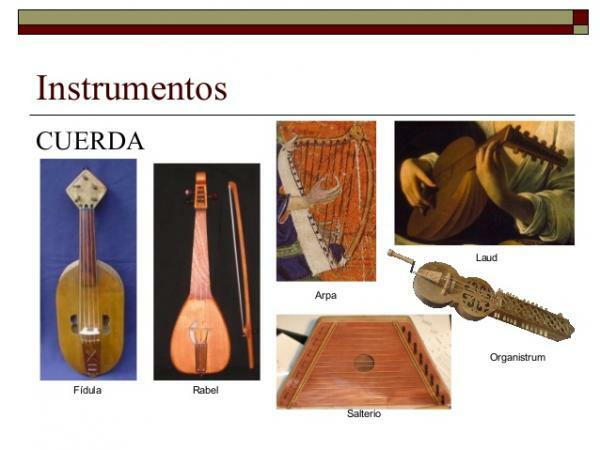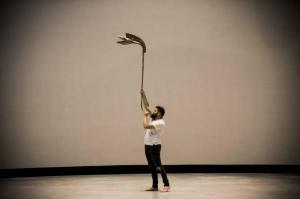The most important musical INSTRUMENTS of the MIDDLE AGES

Image: Pinterest
Do you want to know how music was and was produced in the Middle Ages? In this lesson from a TEACHER we will talk about musical instruments ofthe middle ages to learn about musical tools in a totally different context from ours and that can help us learn about the principles of many musical instruments today. Join us on a musical journey to discover how music was created at this time in our history. It is fascinating!
Index
- Historical context of music in the Middle Ages
- Types of musical instruments in the Middle Ages
- Stringed musical instruments in the Middle Ages
- Wind instruments in the Middle Ages
Historical context of music in the Middle Ages.
It comprises of year 476, when the fall of the Roman Empire happened, the Renaissance in the 15th century (approximately 1450). The dominant power during this time belonged to the nobility and religion, so in terms general music was put at the service of one of these institutions, either at court or church. Therefore, the music in this portion of the story can be classified into two categories: religious music and secular music.
In this other lesson we will talk to you in detail about what the music in the Middle Ages So that, thus, you know all the musical forms and, briefly, the history of this art during that time.
Types of musical instruments in the Middle Ages.
In the case of religious music, the panorama was very limited due to the fact that in the church the only instrument allowed was the organ, without taking into account the human voice.With time and the development of polyphony, little by little more instruments could be accepted within the church with the aim of imitating the human voice or accompanying it.
Now, in the context of secular music, the scope was totally different since those in charge of its dissemination were traveling musicians or people in charge of entertainment at court. These were called menestrelli, troubadours (aristocrats, composers) and minstrels (nomads who entertained the illiterate population).
The main objective of the instruments at this time was to accompany their cheers or entertainments, so they opted for wind and string instruments, which were mostly easy to transport. Although there were, percussion instruments were practically excluded from prominence until the Renaissance. To mention a few we have rattles, tambourines, drums and the atabor. Also of less cultural relevance were instruments of the horn and trumpet families such as the indigo, which were mainly related to the war.

Image: Pinterest
Stringed musical instruments in the Middle Ages.
Within the string instruments most relevant of the time we find the following:
Rabel
It is a rubbed string instrument similar to the violin, of Arabic origin. Their number of strings varies from 1 to 5 and they are played with a bow. It was always made of wood but its shape could vary. The playing position was versatile, standing or sitting and leaning on different parts of the body.
Symphony
Before called "Organistrum", it is also referred to as cinfonía, hurdy-gurdy and hurdy-gurdy among others. It belongs to the category of rubbed rope. Unlike most instruments of this type, instead of using a bow, the symphony has a wheel that turns to rub the strings with the movement of a crank, like a "violin mechanical". Its strings are grouped according to their function and some can change notes by pressing keys that shorten them. During medieval times his body was shaped like a rectangular box.
Psalter
Its operating principles are the predecessors of the harpsichord, and consequently, of the piano. It has a wooden body in a trapezoidal shape in which it has several taut strings. These strings could be played in a pulsed as well as percussed way, in which case, metal or wooden rods were used.
Dulcimer
Also called dulcemele or dulcema, it is a stringed instrument from the same family as the psaltery. It has wire strings in groups of 2 to 5 for each note. Its body is made of wood, it has a resonance box and has a trapezoidal shape.
Harp
It is a string instrument plucked by the fingers, triangular in shape, which has a note assigned by string. Now it is a large instrument but during medieval times it was much smaller and had 28 strings. The harp was used more frequently in the early Middle Ages as it was later replaced by the lute.
Lute
It is a plucked string instrument predecessor to the guitar. The amount of strings was changing in the course of the time. Unlike the guitar we know, the lute has a domed body that has wooden slats inside, arranged in a row like a rack. Another difference is that the hole through which the sound enters the soundboard used to have an ornate design cut into the wood.
Guitars
They are plucked string instruments that are played with both hands. As with the lute, one hand plucks the strings while the other changes the pitch of the strings by pressing them against a mast. There were mainly two types: Moorish guitar and Latin guitar, with the main difference in the shape of the soundboard

Wind instruments in the Middle Ages.
And, finally, we are going to also talk about musical instruments in the Middle Ages within the category of wind. The most common at the time were the following:
Organ
It is a large instrument, sometimes with more than one keyboard that uses the keys to drive air into various metal tubes with assigned notes. The organ was and continues to be in many cases the instrument par excellence in churches to accompany the mass and vocal polyphony.
Dulzaina and Bombarda
They are wooden instruments with double reeds, predecessors of the oboe. Its origins are very old, dating back to 3000 BC, since there were instruments with the reed principle. The dulzaina and the bombarda are variants of the same working principle and materials, but with different shape and timbre variations.
Flutes
They were made of wood and played with both hands, some vertically (such as the recorder or recorder) and others horizontally (such as transverse flute). The musician blows directly through the mouthpiece of the instrument, which works on the principle of bezela sharp edge that cuts the wind to make sound) and has holes in its body that are covered with the fingers to change notes. The models could vary, especially in the Middle Ages it is estimated that around 200 different ones came into existence.
Now that you know more about the musical instruments of the Middle Ages, perhaps you can understand the origins of some instruments of today and marvel at how an object can tell history from such times far away.

Image: Slideplayer
If you want to read more articles similar to Musical instruments of the Middle Ages, we recommend that you enter our category of Music history.

